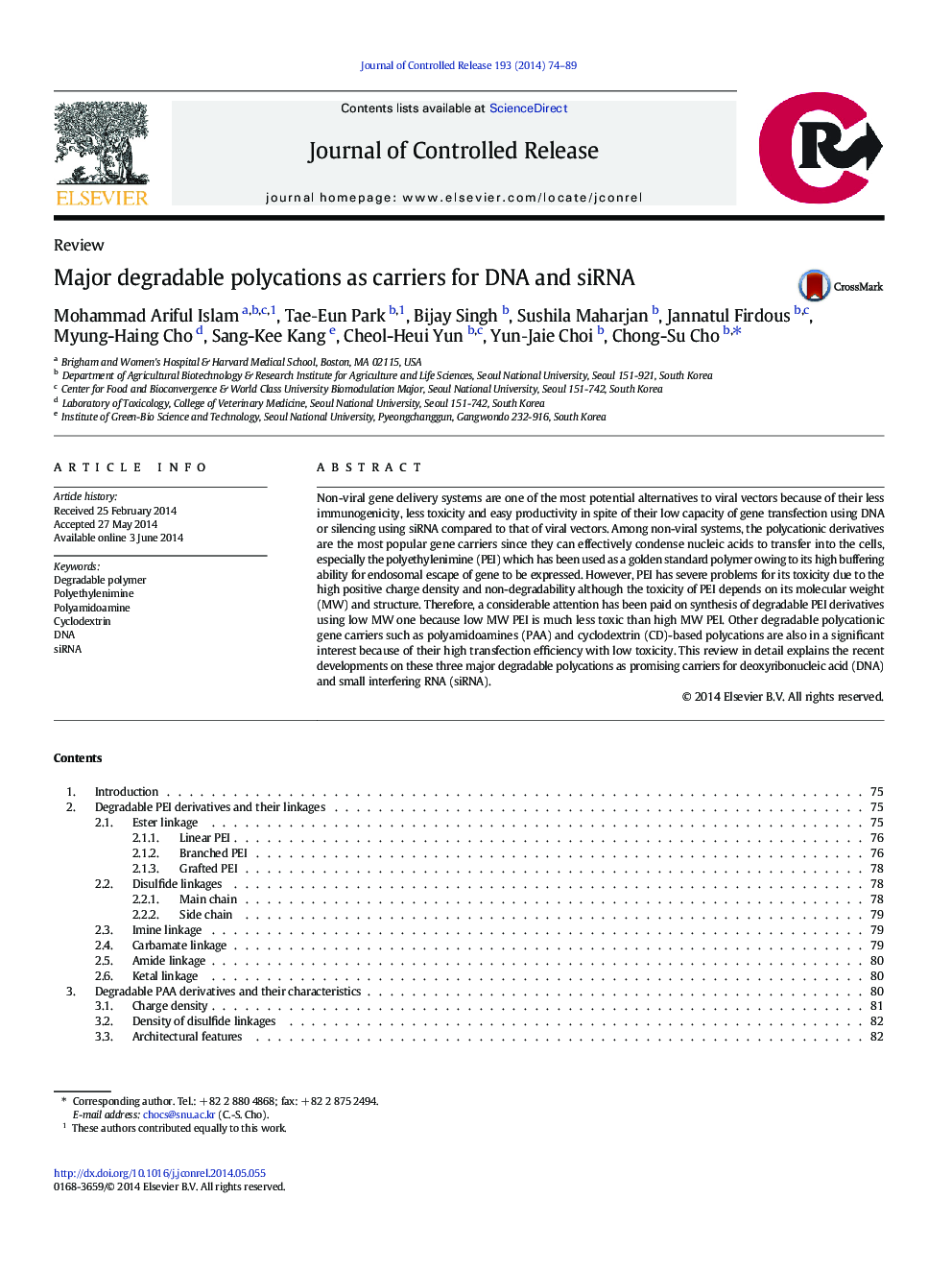| Article ID | Journal | Published Year | Pages | File Type |
|---|---|---|---|---|
| 1423884 | Journal of Controlled Release | 2014 | 16 Pages |
Non-viral gene delivery systems are one of the most potential alternatives to viral vectors because of their less immunogenicity, less toxicity and easy productivity in spite of their low capacity of gene transfection using DNA or silencing using siRNA compared to that of viral vectors. Among non-viral systems, the polycationic derivatives are the most popular gene carriers since they can effectively condense nucleic acids to transfer into the cells, especially the polyethylenimine (PEI) which has been used as a golden standard polymer owing to its high buffering ability for endosomal escape of gene to be expressed. However, PEI has severe problems for its toxicity due to the high positive charge density and non-degradability although the toxicity of PEI depends on its molecular weight (MW) and structure. Therefore, a considerable attention has been paid on synthesis of degradable PEI derivatives using low MW one because low MW PEI is much less toxic than high MW PEI. Other degradable polycationic gene carriers such as polyamidoamines (PAA) and cyclodextrin (CD)-based polycations are also in a significant interest because of their high transfection efficiency with low toxicity. This review in detail explains the recent developments on these three major degradable polycations as promising carriers for deoxyribonucleic acid (DNA) and small interfering RNA (siRNA).
Graphical abstractFigure optionsDownload full-size imageDownload high-quality image (104 K)Download as PowerPoint slide
